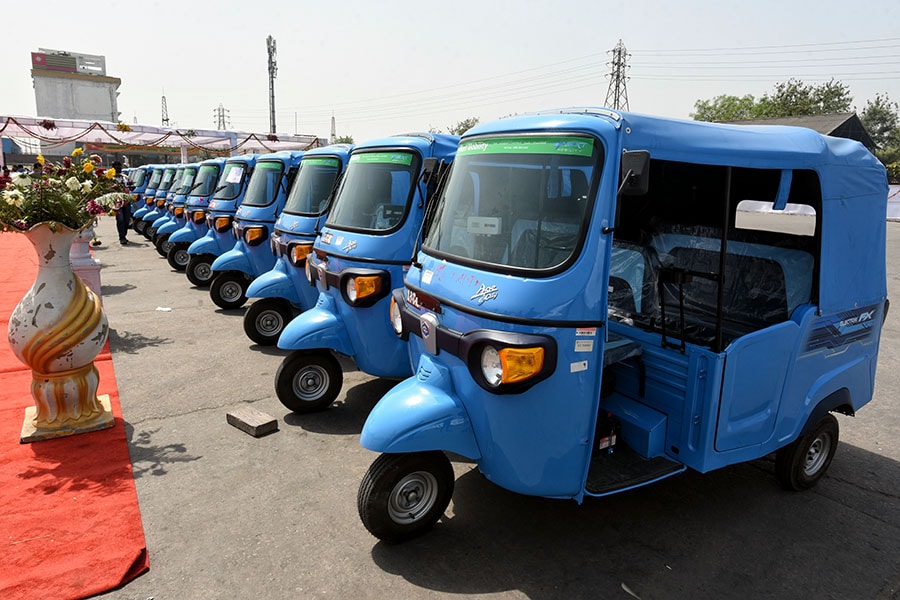
India's EV boom is built on mopeds and rickshaws. Not Teslas
In the United States, luxury-car buyers are snapping up Teslas and other electric cars that cost more than $60,000, and even relatively cheap models cost more than $25,000. In India, those are all out of reach of the vast majority of families but an electric vehicle movement is taking place nonetheless—not on four wheels, but on two and three
 At the launch of Piaggio Ape electric auto rickshaws at IP Depot on March 31, 2022 in New Delhi, India. Image: Sanchit Khanna/Hindustan Times via Getty Images
At the launch of Piaggio Ape electric auto rickshaws at IP Depot on March 31, 2022 in New Delhi, India. Image: Sanchit Khanna/Hindustan Times via Getty Images
In the United States, luxury-car buyers are snapping up Teslas and other electric cars that cost more than $60,000, and even relatively cheap models cost more than $25,000.
In India, those are all out of reach of the vast majority of families, whose median income is just $2,400. But an electric vehicle movement is taking place nonetheless — not on four wheels, but on two and three.
Electric mopeds and three-wheeled rickshaw taxis that sell for as little as $1,000 are zipping along India’s congested urban thoroughfares, cheered on by environmentalists and the government as a way to clear some of the oppressive smog. India’s success with the low-cost vehicles is also providing a template for how developing countries could ditch combustion engines and combat climate change without pricey electric cars.
Consider Kuldeep Singh. Twice a day, he replaces the depleted lithium-ion batteries in his sky-blue Piaggio electric rickshaw with fully charged ones at swapping stations around New Delhi.
“The best thing is, there’s no pollution,” said Singh, who pays about half as much for fresh batteries as he would to fill the tank of a conventional rickshaw. “I feel proud and that India will become stronger.”
©2019 New York Times News Service







